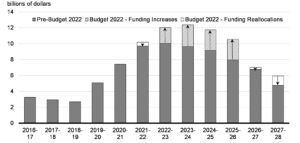“Finally, acceptance of the key to housing affordability – recognizing the need for more supply. Lots of work on many fronts to make this happen. Engage with our industry, and find out what we need. Labour shortages are real, but targeted immigration of skilled construction trades, expanded training, and interprovincial and international recognition of qualifications are all part of the solution. I fully support the conversation moving to how we grow supply to address affordability.” – Jon Love, CEO Kingsett Capital (LinkedIn)
We are bound by our regulations in the real estate development industry. Coincide rules with explosive demand, and we have set the stage for inflationary housing prices that cannot be sustained. When homes become unaffordable, we have to impose policy decisions that significantly impact the housing market on a whims notice. It would be better to have a more harmonious relationship between regulations and prices. Why do we have to inflict damage with harsh actions? Couldn’t we root out the issues and focus on more long-term needs. It has always been a supply issue, and this article focuses on the need to increase supply while combining policies that help protect our right to afford a home.
“There’s significant debate about what’s driving it (price increases), with limited housing supply, a high level of immigration, investor activity. and meagre interest rates all cited as factors.” (Source).
In the years that we have been involved in real estate development, we’ve heard firsthand the gripings from top builders. It would take at least ten years for you to solidify yourself as a developer who impacts the housing demand crisis. The time it takes is mainly tied to the regulations and daunting processes of getting a tower built. The Housing Accelerator Fund has promise and could be the booster to supply that we desperately need. It is great to see that our government is focusing more on the supply of housing, but we need to be committed to the supply issues by letting trusted developers carry out more projects for more units.
“The government is committed to implementing long-term, cost-effective solutions that address housing needs for the middle class and those working hard to join it,” stated Minister of Housing Ahmed Hussen.
“With the help of Canadians, we’ll aim to identify the most efficient, effective and innovative solutions that will make a true difference in increasing the housing supply and access to affordable homes across Canada.” Source
The federal proposal aims to support building denser neighbourhoods, increase retrofits, reduce homelessness, and provide more co-op housing. The specific plan to achieve this is below.
Key outcomes of this federal initiative:
- Invest $4 billion in a new Housing Accelerator Fund: The fund will be designed to be flexible to the needs and realities of cities and communities and could include support such as an annual per-door incentive for municipalities or up-front funding for investments in municipal housing planning and delivery processes that will speed up housing development. Its focus will be on increasing supply, but government support will be targeted to ensure a balanced supply that includes a needed increase in the collection of affordable housing.
- The government also plans to spend $1.5 billion over two years to create 6,000 affordable units — 25 percent of which will be for women-focused housing — and make another $1.5 billion in loans and funding available to develop 6,000 co-op housing units.
- More than $42 billion in federal support for the construction and repair of rental housing, affordable housing, and shelters;
- More than $15 billion in joint funding with provinces and territories, including for the Canada Housing Benefit to provide direct rent assistance;
- More than $11 billion in support for community and social housing;
- More than $2.7 billion in distinctions-based support for housing in Indigenous communities;
- More than $3 billion for Reaching Home: Canada’s Homelessness Strategy, and a commitment to eliminate chronic homelessness by 2030; and,
- Tabling legislation would implement Canada’s first national vacant housing tax on non-Canadian, non-resident owners.
- Launching a new Housing Accelerator Fund that will target the creation of 100,000 net new housing units in the next five years;
- Help speed up the time it takes to build more homes by investing in e-permitting technology and helping communities streamline the planning process.
- Work with municipalities to identify vacant or underused property that should be converted to housing on the principle of using or losing it.
The federal government means business with these changes. You can even suggest new developments on federally owned land, and they will either give you the land for free or at a highly discounted price.

Are 100,000 new homes enough to make a difference over the next five years?
Our municipal, provincial and federal governments are the key decision-makers that must work together to guide sound policies that will lead to more desire for development. We know of the issues of waiting ten years to get a shovel in the ground. Trusted developers with creative ideas should be in complete control of the destiny of the housing supply in Canada. The barriers to benefitting from real estate development in Canada must be mitigated to entice willing participants to start investing in future real estate developments. Wouldn’t investors prefer a 2-year turnaround on a $100 million project? (Source)
Building more housing will require investments from new real estate development stakeholders. This should be a Canadian initiative where investors from other industries sense the attractiveness of getting involved with real estate development. For us to unearth the beauty, we must put policies in place that entice new investment:
- Guaranteed returns on investment
- Speedy investment recovery
- Support for other projects these investors may be taking on
- Acclaim within our country for the hard work
The aims are clear, and we all want to see this fund succeed. The Housing Accelerator Fund will also make it easier for government bodies to submit applications. This, along with specific support for new homebuyers, limitations on foreign investors, and a more streamlined approach to releasing funds, will undoubtedly improve our chances of overcoming these varied pricing issues. A coordinated approach where developers submit proposals and all branches of government review and support projects is necessary for us to overcome the problems. To this end, Budget 2022 signals the government’s intention to create flexibility within federal infrastructure programs to tie access to infrastructure funding to actions by provinces, territories, and municipalities to increase housing supply where it makes sense to do so.
I tend to agree with Jon Love that if we can get the approvals from the government and hire the necessary workers, we are better equipped to meet the demand we are facing. We remember the efforts of the government in the 1970s to overcome supply issues with similar ideas, but this could be one step in the right direction, where ongoing improvements are made to overcome the variables that impact price increases once and for all.





